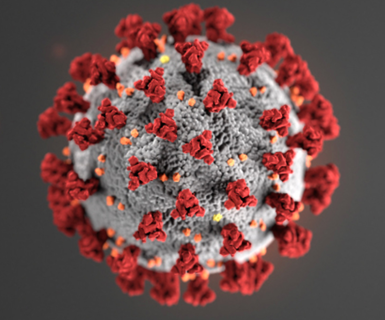
As the novel coronavirus continues to shape how we work and live, experts and laymen alike have been making recommendations for how to stay healthy. The abundance of often-conflicting information makes it difficult to evaluate what steps businesses need to take to keep employees safe. Fortunately, two reliable sources — the U.S. Department of Labor’s Occupational Safety and Health Administration (OSHA) and the American Industrial Hygiene Association (AIHA)— have released some straightforward guidelines and resources.
OSHA Recommendations for Keeping Manufacturing Workers Safe
Safety measures employers can implement to protect employees working in manufacturing include:
Featured Content
- Encouraging sick employees to stay home
- Practicing sensible social distancing and maintaining 6 feet between coworkers, where possible
- Establishing flexible work hours (for example, staggered shifts), if feasible
- Discouraging workers from sharing tools and equipment, if possible
- Encouraging respiratory etiquette, such as covering coughs/sneezes or coughing/sneezing into your upper sleeve instead of your hand
- Training workers on how to properly put on, use/wear, take off and maintain protective clothing and equipment
- Allowing workers to wear masks over their nose and mouth to prevent spread of the virus
- Providing alcohol-based hand sanitizer (60% alcohol or higher) for employees who do not have access to soap and water
- Using Environmental Protection Agency-approved cleaning products from this list of disinfectants for use against COVID-19, or any that have label claims against the coronavirus
- Monitoring public health communications about coronavirus recommendations for the workplace and ensuring that workers have access to and understand that information
- Encouraging workers to report any safety and health concerns
Download the OSHA recommendations for manufacturing employees as a PDF here. OSHA also published general guidelines for preparing workplaces for COVID-19. Although the guidance is not specific to manufacturers, it includes general information on COVID-19, how it spreads and how it may affect business. For all of OSHA’s COVID-19 resources, go to osha.gov/covid-19.
Resources from AIHA on PPE, Disinfectants and More
AIHA has developed a series of free resources in response to the coronavirus outbreak. One resource available to everyone is a consultation with a local industrial hygienist. To find one, go to their online directory here and fill out the form. These consultants are available to answer questions from consumers, employees and business owners alike.
Other resources primarily discuss recommendations for individuals with high risk of exposure, like healthcare professionals, but also offer straightforward guidelines for anyone concerned about masks, ventilators, PPE and disinfection. Resources include:
- A list of specialists who can perform proper respirator fit testing, found here
- A downloadable PDF with guidelines for using masks and respirators, found here
- A 60-minute, on-demand webinar on ventilator use, surface disinfection and PPE, found here
- A downloadable PDF with guidelines for reopening buildings that were closed as the result of COVID-19, found here
You can always find all of Gardner Business Media’s COVID-19 coverage here: pfonline.com/covid-19.
If you have resources to share or a story to tell, get in touch with me at jrush@pfonline.com.
RELATED CONTENT
-
In-House Blackening of Ferrous and Non-Ferrous Metals
Process satisfies customers’ shipping requirements while meeting stricter water regulations in times of drought.
-
Trivalent Chrome Overview
As the finishing industry begins to move away from the use of hexavalent chromium to trivalent chromium, what factors should finishers consider as they make new investments? Mark Schario, chief technology officer for Columbia Chemical offers a helpful overview of this complicated topic.
-
The Continuing Battle Over Hex Chrome
The latest in the California regulatory battle over the phase-out of hexavalent chromium use in finishing operations.




















